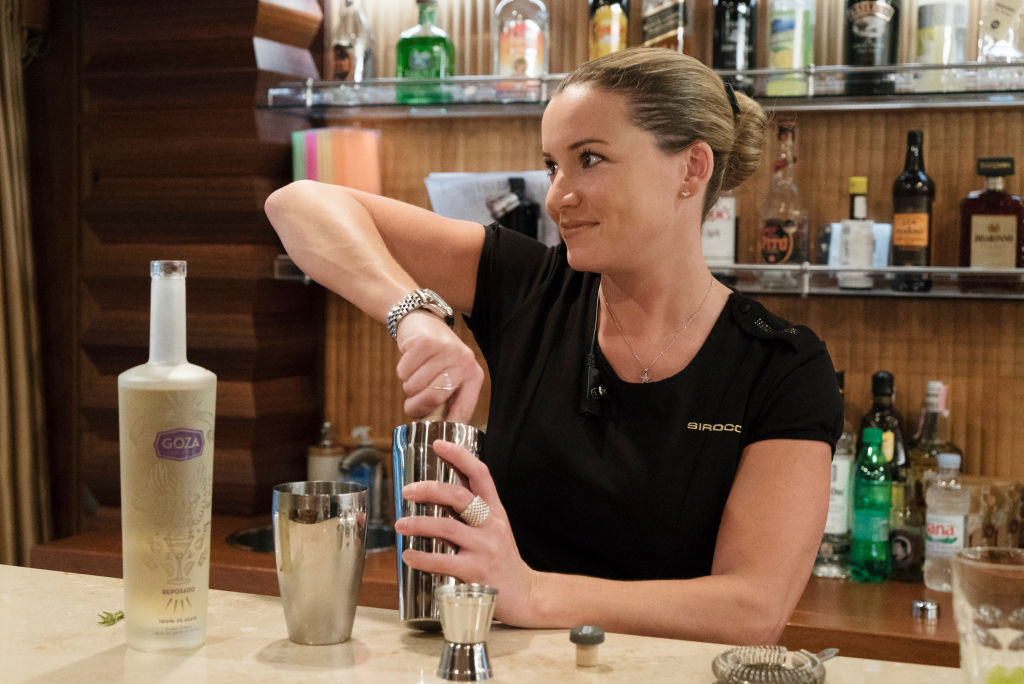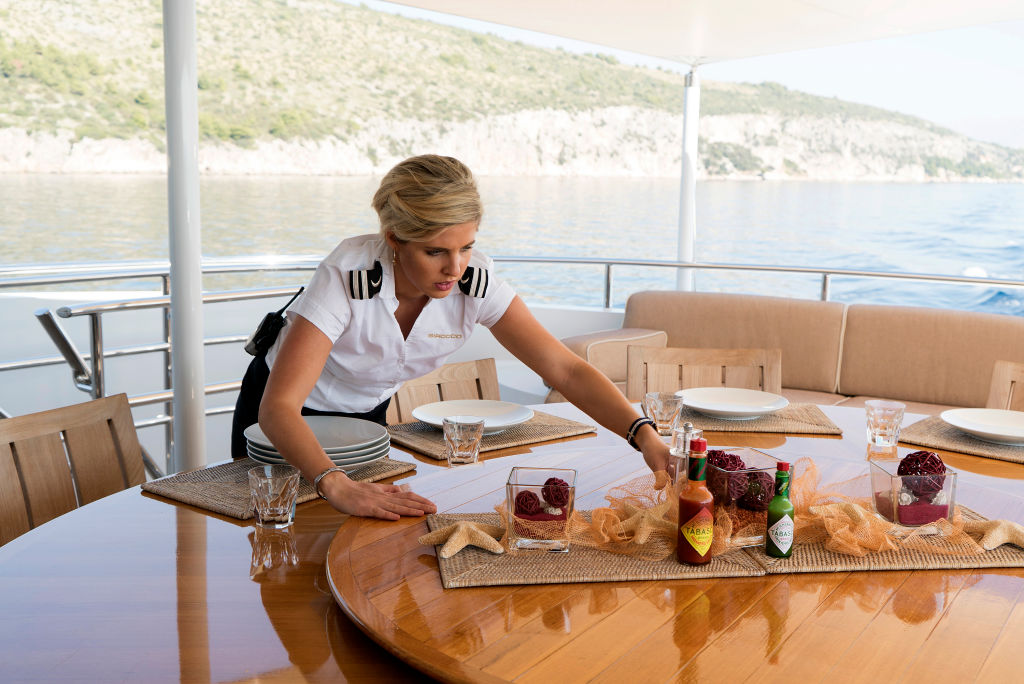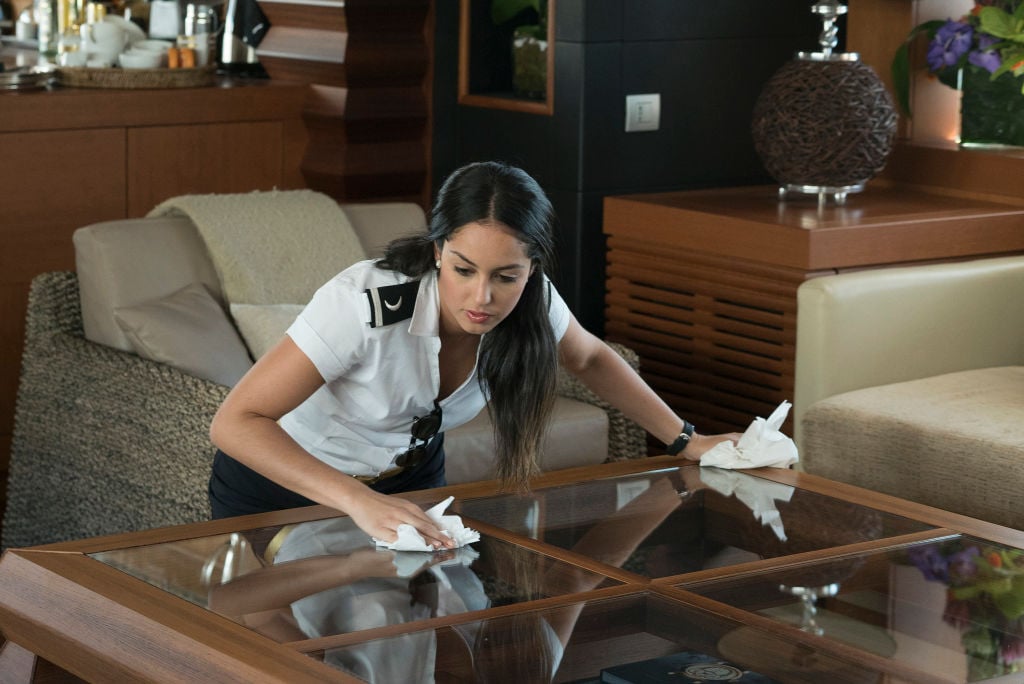‘Below Deck Med’: What Does It Mean to Be Silver Service Trained?
When chief stew Hannah Ferrier from Below Deck Mediterranean reviewed third stew Kasey Cohen’s resume, she noted the stew was “silver service” trained.
Of course, fans now know Cohen fudged her resume a bit to get hired. But how hard can it be to fake it until you make it? When it comes to silver service, it is something you apparently can’t just fake. Silver service extends beyond just “making it nice,” to take a colloquialism from Dorinda Medley from The Real Housewives of New York City.

According to Polo & Tweed, silver service encompasses all forms of formal and informal dining. “Silver Service is the all-encompassing word for all types of (mostly) food and beverage service, being it formal or informal,” according to the resource. “From pouring a cup of tea to synchronised service on a yacht through to cutting a cigar, is one that requires education in the fundamental theory supported by hands-on practice.”
What are some of the basic rules?
Silver service is derived from 17th and 18th century England, according to Polo & Tweed. “On Sunday the normal wait staff in a private home would be given the day off, so the Butler (head of the house and staff) would be asked to step in to serve the food to the family. The Butler would walk around the table, serving the family or guests from his platter directly onto their plates.”

This service is always performed from left to right, known as service à l’anglaise. As seen on Below Deck Med, the primary guest is always served first. Then service runs clockwise so the stews don’t bump into each other. Although service is implemented from the left, clearing commences from the right. This begins with the guest to the right of the primary.
Glasses are stacked diagonally to the right, beginning with the wine glasses. Water glasses are last and are in the front. When serving, stews should stand behind the guest, to the left of the guest. Food should be served using the right hand.
Are there different types of silver service?
Silver service comes in a variety of forms, which is why pretending to be silver service trained can come back to haunt you. Stews are expected to perform the service without flaws too, which means training is imperative.
Seven different versions exist, according to Polo & Tweed. They include Russian, Butler, Tray, English, French and American service. How the food is plated plays a big role and how it is presented differentiates the service. For instance, Below Deck Med often features the American version where bread, butter, and salads are on the table. Food is then plated in the kitchen.

Also, there are some strict rules with silver service too. Never leave an empty space before a guest but blend into the background and be unobtrusive. Food temperature is vital to perfect service. When chef Ben Robinson realized the food kept arriving at the table cold, he purchased metal domes to cover the dishes. The domes were removed once the food hit the table and was hot when delivered.


